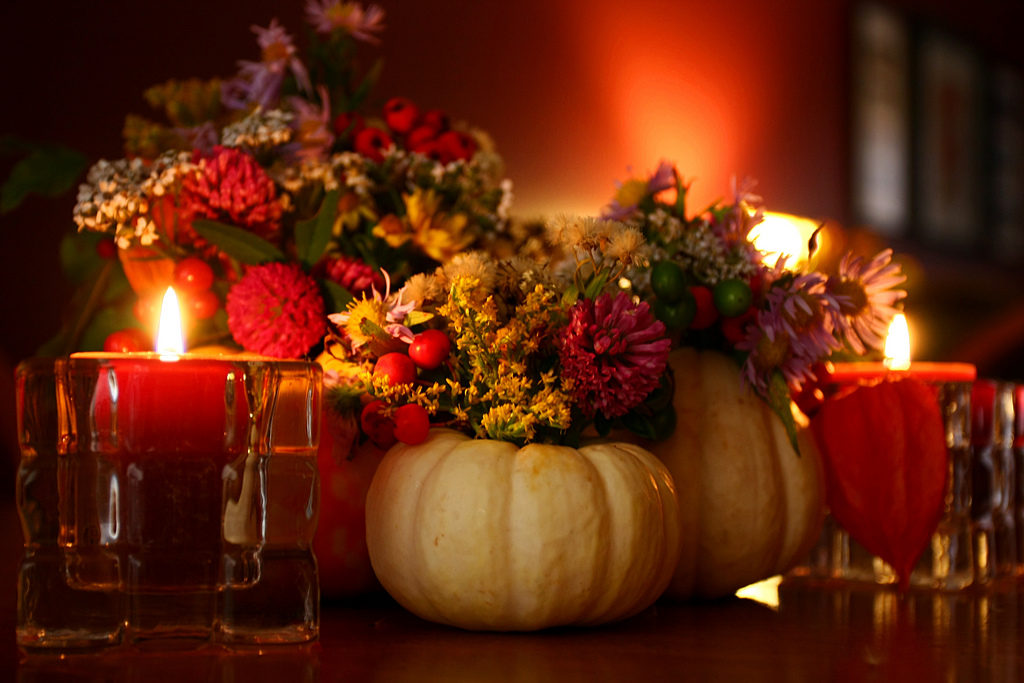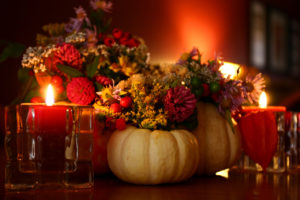The Pilgrims Give Thanks

Photo: Martin Cathrae, flickr
In honor of Thanksgiving, here is an excerpt from Finding Myself in Britain with a look at some of the history behind the holiday. For us in England today, it’s just another normal day as unusually we aren’t attending the service at St. Paul’s Cathedral today – the kids have missed too much school lately. Happy turkey day, everyone! I hope it’s a day of giving thanks, wherever you are.
For a long time I didn’t realize that the British celebration of Harvest underpins the American celebration of Thanksgiving. The Pilgrim fathers and mothers observed days of fasting and days of feasting, one of the latter at Harvest, through which the modern Thanksgiving holiday was born.
Devout in their faith, the Pilgrims left England in 1608 for Amsterdam in search of religious freedom. They lived there twelve years before the foreign culture wore them down and they decided to head for the New World. Their journey on the Mayflower, however, was desperate. The ship they travelled on was designed to carry cargo, not passengers. And the cabin where they slept was intended for thirty people, not eighty. Their food rotted and became infested with insects; they nearly drowned when the ship’s main beam cracked; they endured ridicule from the sailors. They pressed on through their five-month journey across the Atlantic – though admittedly they didn’t have much choice. New World or bust.
When they arrived in what is now Massachusetts, the Pilgrims faced a new set of challenges: a new land called for the planting of food and the building of places to live. But in all things they gave thanks, observing a full day of Sabbath each week. After surviving their first harsh winter, they hosted a three-day feast that we now name as the first Thanksgiving. During this celebration, they gave thanks for their food, for seven houses built, for a peace treaty with the Native Americans, and most importantly for the freedom to worship God. The women cooked, the men played games, and they all shared stories and returned thanks to the Lord. Sound familiar? The women cook and the men watch football. They invited the Native Americans who helped them acclimatize to this strange new world to join them at their table.
This is the account I’ve always heard, but lately some contest it. I’ve learned that we base this vaunted holiday on what might be a lot of lore, for we only have a 115-word account from that first Thanksgiving. The pilgrim Edward Winslow wrote a letter to England after the feast, including this brief description (and note the “u” in labours hadn’t got lost yet):
Our Harvest being gotten in, our Governor sent four men on fowling; that so we might, after a more special manner, rejoice together, after we had gathered the fruit of our labours. They four, in one day, killed as much fowl as, with a little help besides, served the Company almost a week. At which time, amongst other recreations, we exercised our Arms; many of the Indians coming amongst us. And amongst the rest, their greatest King, Massasoyt, with some ninety men; whom, for three days, we entertained and feasted. And they went out, and killed five deer: which they brought to the Plantation; and bestowed on our Governor, and upon the Captain, and others.
Slim historical evidence notwithstanding, the tradition grew, if not every year at first. And probably turkey wasn’t the centrepiece during that first celebration, but goose or duck. Later during the Revolutionary War, George Washington and his army stopped on their way to Valley Forge in bitter weather to mark the occasion. The practice then became solidified when in 1863 President Abraham Lincoln declared that the last Thursday in November would be a national day of Thanksgiving. Then in 1941 a joint resolution of both houses of Congress decreed, and President Franklin Delano Roosevelt signed into law, the bill establishing that the fourth Thursday of November shall now and always be Thanksgiving.
From Finding Myself in Britain (Authentic Media, 2015). Reprinted with permission. You can buy copies from good bookshops, Eden.co.uk (where it’s 25% off) and Amazon.co.uk and Amazon.com. (In the States it’s only available from Amazon.)








 Hello!
Hello! 
Thank you for your posts in Our Daily Bread devotionals, plus I enjoy reading your blog and British perspectives.
Ah – thanks so much!
Pingback : Amy Boucher Pye » Happy Thanksgiving!